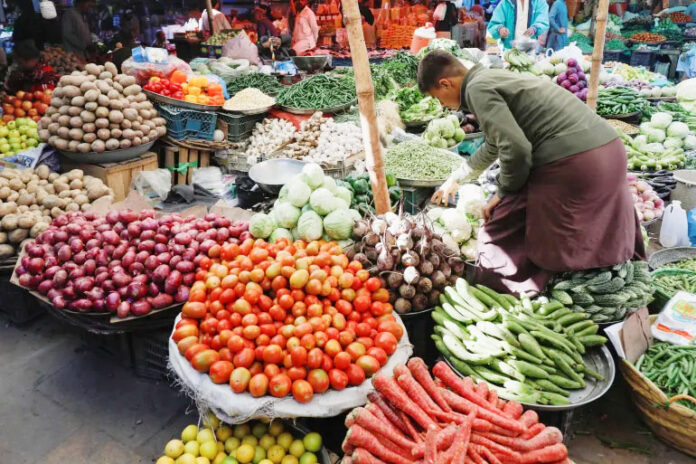By Jawad Anwar and Shagufta Rasheed
The painful food inflation has hit Pakistanis amidst a sharp economic downturn with an estimated GDP growth of mere 1.3 percent in FY23 versus 6 percent in FY22. This economic turmoil has left nearly two million people unemployed. It is not difficult to imagine the dire consequences of such skyrocketing food inflation on the livelihood of those who are unemployed and those whose income has taken a nosedive during this economic meltdown.
The monthly inflation rate in Pakistan continued to fall in the third straight month, reaching 27.4 percent in August 2023. It is the lowest mark hit since January 2023 and further down from 28.3 percent recorded in the previous month. The most significant reduction was observed in alcoholic beverages and tobacco (97.5 percent vs. 102.1 percent in July), clothing (18.5 percent vs. 20.4 percent), housing and utilities (6.3 percent vs. 10.8 percent), hotels and restaurants (34.1 percent vs. 34.7 percent), and recreation and culture (61.4 percent vs. 65.9 percent). Meanwhile, food inflation posted the least increase in eight months (38.5 percent vs. 39.5 percent). On a monthly basis, consumer prices surged by 1.7 percent, following a 3.5 percent hike in the previous month. Further, the core inflation rate, which excludes volatile items, remained steady at 18.4 percent in August, the same as in the previous month.
In addressing food inflation, as in all other matters, sincerity of intent counts more than anything else. For decades, our rulers have made it a habit to talk more and do less. That has resulted in weak or no accountability within government departments and agencies entrusted with certain responsibilities
The price of wheat flour in Pakistan has been hovering at distressing high levels for several weeks now. Roti and naan, essential staples of the country, are more expensive due to this steep hike in the flour price. No wonder people are losing their lives in stampedes occurring at the distribution of free wheat flour, and some are committing suicide. Nonetheless, most of the financially constrained people are managing to scrape on a meagre income by working in the shadow economy, coupled with reliance on debts, charity, and the government’s cash handouts and subsidies.
In line with wheat inflation, the rates of price rises in other related products were also high. The edible items priced at Rs 5300 in urban areas back in February 2022, now cost roughly Rs 10,000. The unsettling truth is that food inflation is here to stay. Supply shocks caused by the last year’s floods, higher international commodity prices, the rupee’s depreciation, a lack of administrative checks on retail prices amidst a worsening political crisis, hoarding of food commodities, and the unabated smuggling of food items to neighbouring Afghanistan all contribute to the likelihood of high food inflation in the foreseeable future.
Stories of the illicit transportation of wheat, wheat flour, and cooking oil to Afghanistan make headlines every day in newspapers. But who cares to stop it amidst the ongoing political and constitutional crisis? Admittedly, smuggling and hoarding of food items alone are not fueling food inflation, and there are solid economic reasons for it like an increase in support prices, the rupee’s depreciation, higher international prices, and such like.
“This climate calamity couldn’t have come at a worse time, when Pakistan’s economy was already struggling with a balance of payments crisis, rising debt, and soaring inflation,” Maleeha Lodhi, former Pakistan ambassador to the UN and the UK, told the BBC. Pakistan’s inflation rate was more than 24 percent before the floods, according to reports, and some costs have skyrocketed by 500 percent. Authorities may need to import food to feed people and raw materials for industry, but the country’s foreign reserves were running low even before the crisis.
In eight months of the fiscal year (between July 2022 and February 2023), forex-starved Pakistan had to spend $6.687 billion on food imports, according to the Pakistan Bureau of Statistics. Chances are that the full fiscal year’s food import bill will exceed $10 billion.
At a time when the country is running out of foreign exchange reserves, it is imperative to put effective checks on the smuggling of food items out of the country. Similarly, it is critical to ensure that food commodities are not hoarded, and retailers don’t overcharge customers or short sell to them.
But such things can be done only in an environment of at least some political stability, which regrettably remains elusive. As a result, food inflation may continue to remain high in the coming months as well. While the central and provincial governments have engaged in a blame game for the crisis, experts say it stems from long-standing deficiencies aggravated by the Russia-Ukraine conflict, the devastating floods of 2022, and the smuggling of wheat to Afghanistan.
Stubbornly high food prices will start easing only when our agricultural output increases and energy prices become stable. This would lead to reduced consumer inflation rendering agricultural inputs cheaper. Equally critical is the return of political stability to the country coupled with a reduction in smuggling and hoarding of food items.
In addressing food inflation, as in all other matters, sincerity of intent counts more than anything else. For decades, our rulers have made it a habit to talk more and do less. That has resulted in weak or no accountability within government departments and agencies entrusted with certain responsibilities.
The writers is a freelance columnist






















